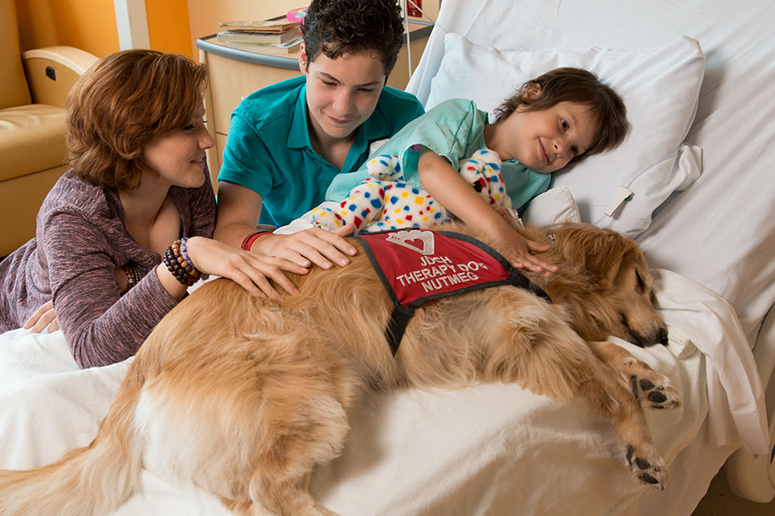Pediatric Cardiac Catheterization
Pediatric cardiac catheterization is a nonsurgical procedure we use to diagnose and treat many congenital heart defects and arrhythmias.
Pediatric cardiac catheterization has changed the way we treat children with congenital heart disease. Using this nonsurgical procedure, we can both diagnose and treat many congenital heart defects and arrhythmias.
Call us for more information or to schedule an appointment
954-265-3437What Is Pediatric Cardiac Catheterization?
Pediatric cardiac catheterization helps doctors diagnose and treat heart conditions without surgery in children. We insert a catheter – a thin, flexible, hollow tube – into a blood vessel and gently guide it to the heart. We use cardiac imaging to help “see” and record information about the blood vessels and the heart. For helpful information about the procedure, download Preparing for Your Child's Cardiac Catheterization.
For many years, doctors have used cardiac catheterization for diagnosis. The procedure helps us evaluate congenital heart defects, check for heart valve problems, locate blocked blood vessels and measure the blood pressure inside the heart.
Today, we also use it as an interventional treatment for certain conditions. Interventional procedures are less invasive than surgery. They offer fewer risks and quicker recovery time for children.
Sometimes, we do both catheterization and surgery, and the cardiologist and the cardiac surgeon work together as a team to treat your child. This combined treatment is known as a hybrid procedure. We have a dedicated pediatric hybrid lab where we perform hybrid procedures.
Why Choose Us for Pediatric Cardiac Catheterization?
Cardiac catheterization has revolutionized the field of pediatric cardiology. For children, it means faster recovery time, no scarring, less pain and less disruption in their lives. We offer:
Led by two internationally acclaimed interventionists, our team has more than 50 years of combined experience in the field. We can perform cardiac catheterization procedures on the tiniest of hearts or on adults with complex congenital or structural cardiac defects
We can use cardiac catheterization to treat about 30 percent of congenital heart disease, including:
- Closing some holes inside the heart
- Repairing narrow heart valves or arteries
- Placing a new valve, in certain conditions
We can use catheterization on very young children, including very low birth weight infants or micropreemies. In fact, newborn babies with congenital heart defects greatly benefit from catheter-based procedures.
We can also treat adults through our adult congenital heart disease program.
For more complex congenital heart conditions, we may use a hybrid procedure that combines surgical and interventional procedures. In our dedicated pediatric hybrid suite, a heart team works together seamlessly to provide personalized care.
We have invested so strongly in cardiac catheterization technology and research because often it’s better for children. When we can use catheterization to close a hole in the heart, a child might be able to recover at home within a day.
The procedure also offers a cosmetic advantage for some patients because it usually leaves no visible scar. We want to minimize the amount of time families have to spend in the hospital so your child can get back to being a child.
We are the only children's hospitals in South Florida to offer transcatheter pulmonary valve replacement (TPVR), a minimally invasive procedure that uses the FDA-approved Harmony TPV™ to replace a blocked or leaky pulmonary heart valve that has previously been repaired in pediatric (and adult) patients with congenital heart disease.
Pediatric Cardiac Catheterization Procedure: What to Expect
We can use a 3-D mapping technique – instead of an x-ray – to help us diagnose and treat heart conditions in our catheterization lab. Pediatric cardiac catheterization offers less risk than surgery, along with a quicker recovery. Here are some key things to know:
- We give children an IV with medicine to help them relax, as well as anesthesia. They will be asleep the entire time during the procedure and will not feel anything.
- Unlike surgery, cardiac catheterization requires no incision and no stitches. We only make a needle puncture to insert the catheter (a long thin tube) into an artery or vein in your child.
- A cardiologist gently guides the catheter through the blood vessels to the heart, using imaging to see along the way. Once the catheter is in place, we use it for diagnosis, or we pass other tiny instruments through for an interventional procedure (such as closing a hole in the heart).
- Cardiac catheterization procedures can take anywhere from 1 to 3 hours to complete. If we are performing a hybrid procedure, it may take up to 4 hours.
- Many children are able go home after spending the night in the hospital after a catheterization procedure. Your cardiologist will tell you ahead of time how long your child will likely need to stay in the hospital.
Call us for more information or to schedule an appointment
954-265-3437
Arrhythmia In Children Is Treated Using 3D Mapping

It matters to you. It matters to us.
Joe DiMaggio Children's Hospital Quality and Safety
See our hospital's patient satisfaction numbers, number of patients and more.
View Quality and SafetyYou have a Right to Know About Prices
We want to give you the information you need to make important healthcare decisions, including the costs of our services.
View PricingMyChart Portal
View test results, schedule follow-up appointments, request prescription refills and more.
Login or Sign-up to MyChart

